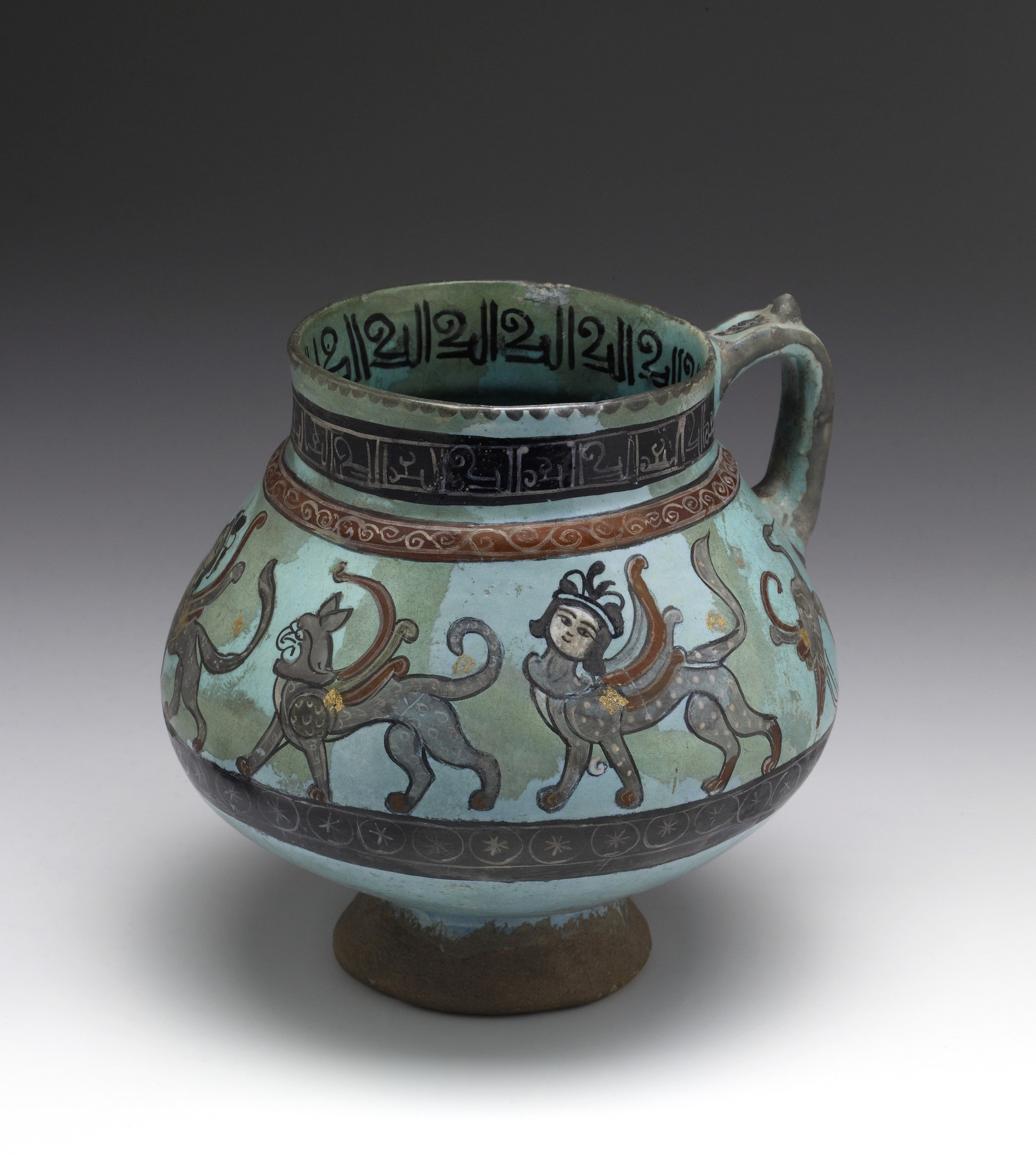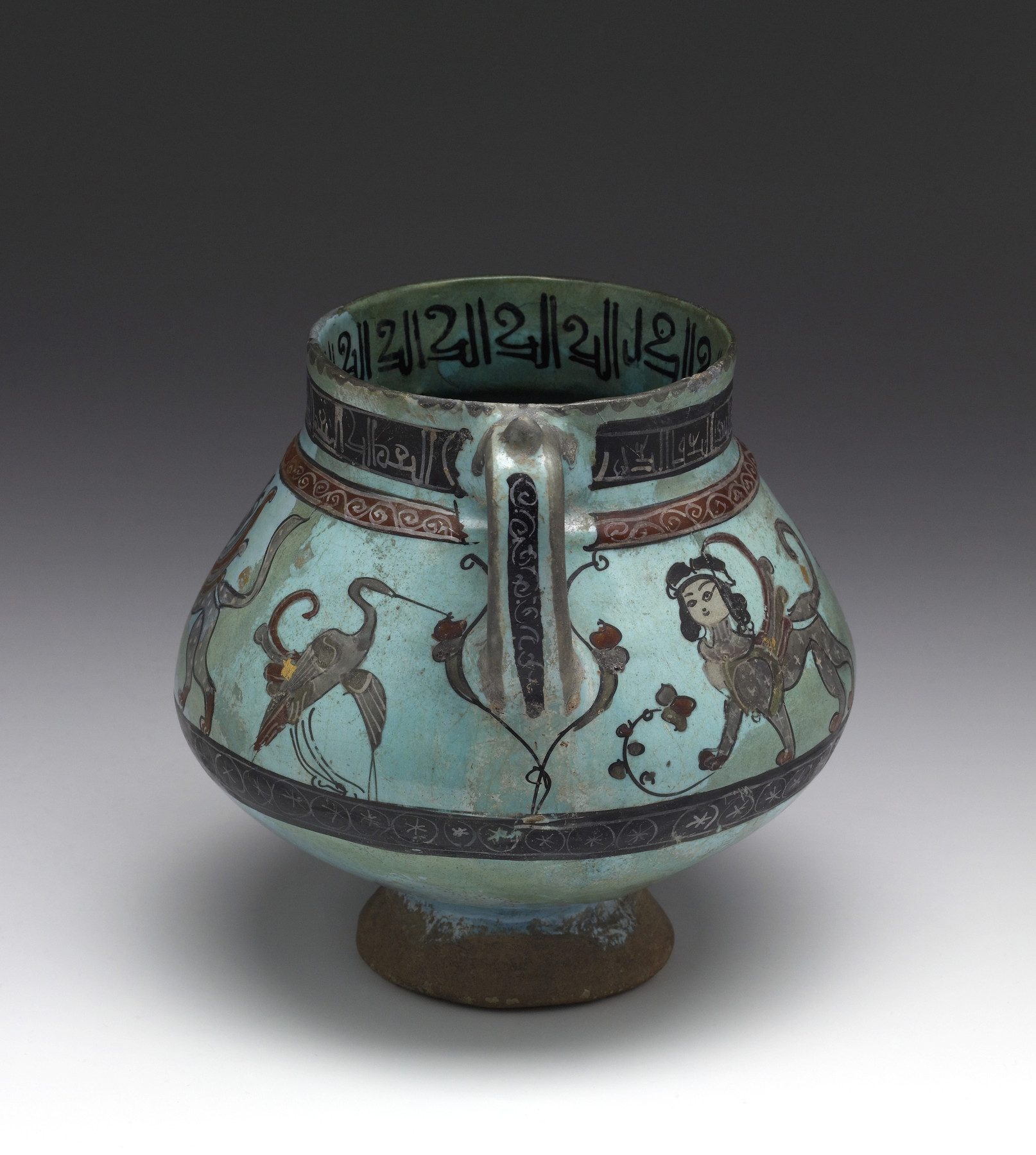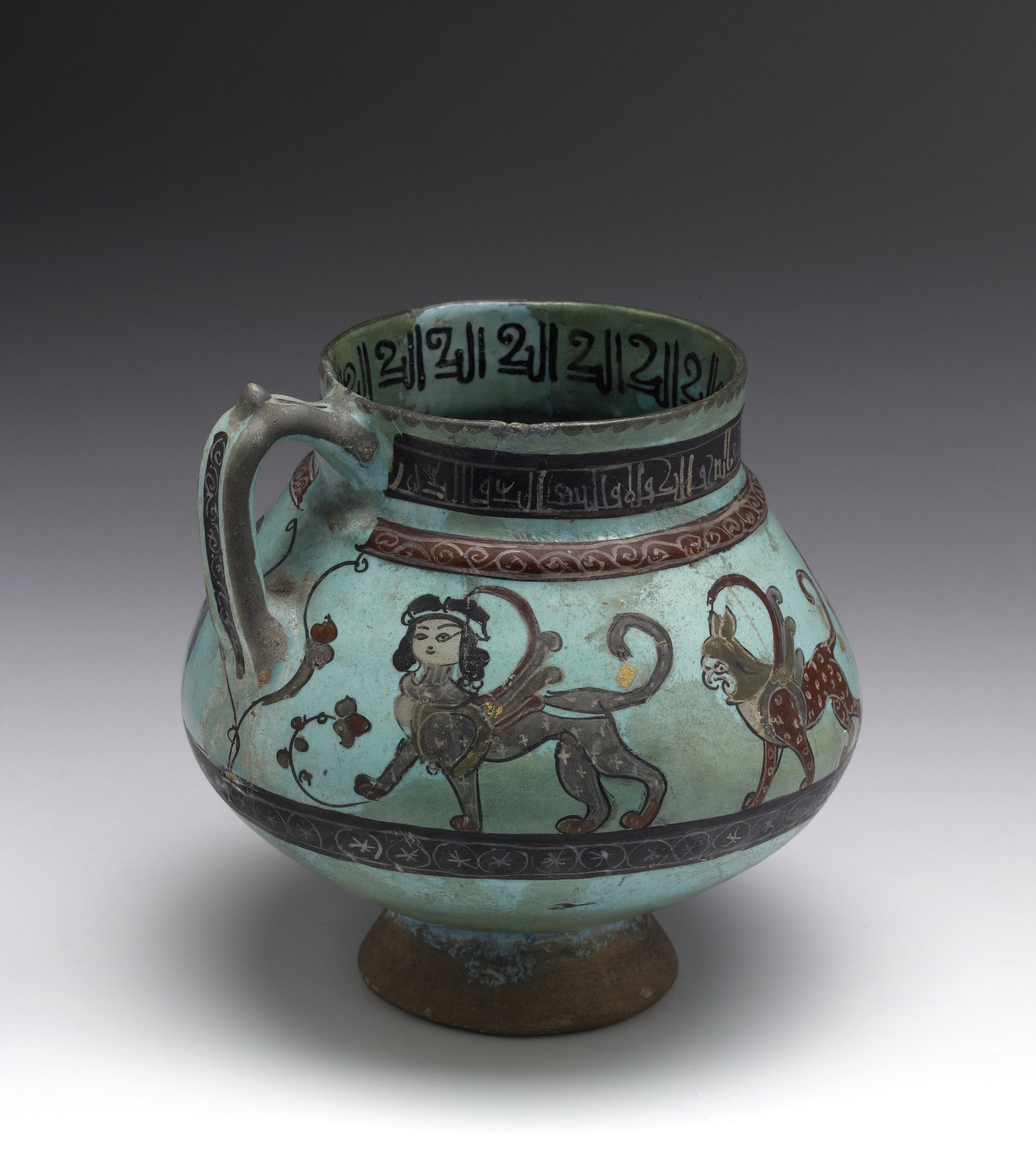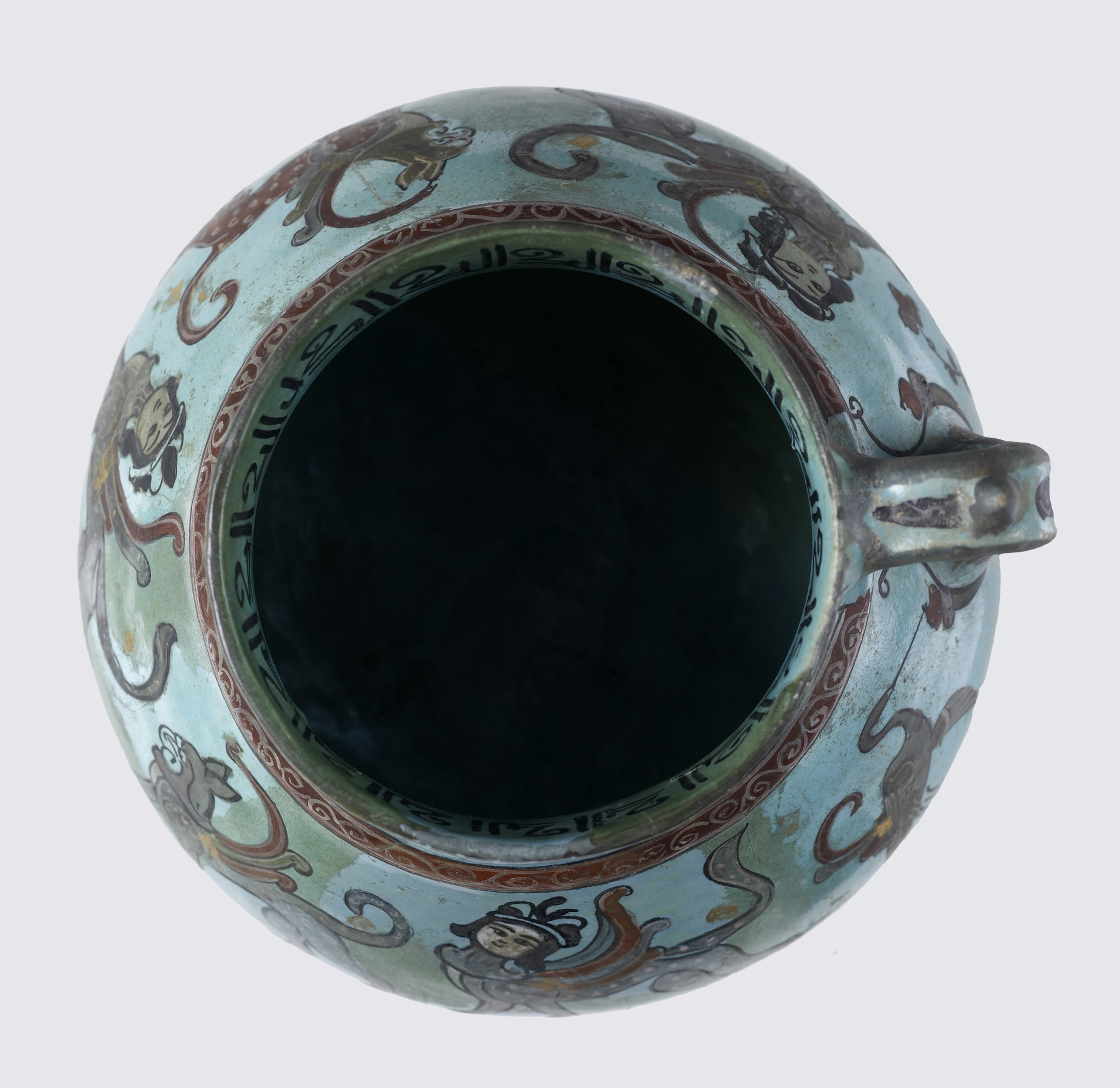Jug with Sphinxes, Griffins, and Heron
(Islamic World )
Mina’i is a modern collectors’ term for ceramics made in Iran during the late 12th to early 13th centuries. The term mina’i, translates as “enamelled” in Persian, designating the colored glass pigments used to paint detailed figural decoration on vessels or tiles, which were then fixed on the ceramic base by multiple firings. The use of a wide range of colors, including turquoise, red, green, purple, and black, also led these types of ceramics to be called by the Persian term “haft rang,” or “seven colors.”
Sphinxes, griffins, and a heron parade about the exterior of this footed jug. Stylized floral motifs surround the handle of the jug and feet of the griffin, while two rings of geometric patterns encircle the figures. A kufic inscription marks the upper exterior rim while a pseudo-kufic inscription encircles the interior rim of the jug.
Provenance
Provenance (from the French provenir, 'to come from/forth') is the chronology of the ownership, custody, or location of a historical object. Learn more about provenance at the Walters.
Acquired by Henry Walters, Baltimore, 1925; by bequest to Walters Art Museum, 1931.
Conservation
| Date | Description | Narrative |
|---|---|---|
| 10/5/1953 | Treatment | cleaned |
Geographies
Iran (Place of Origin)
Measurements
H with handle: 5 × W with handle: 5 1/4 × D: 5 1/16 in. (12.7 × 13.3 × 12.9 cm); H of rim: 4 7/8 in. (12.4 cm)
Credit Line
Acquired by Henry Walters, 1925
Location in Museum
Not on view
Accession Number
In libraries, galleries, museums, and archives, an accession number is a unique identifier assigned to each object in the collection.
In libraries, galleries, museums, and archives, an accession number is a unique identifier assigned to each object in the collection.
48.1169














